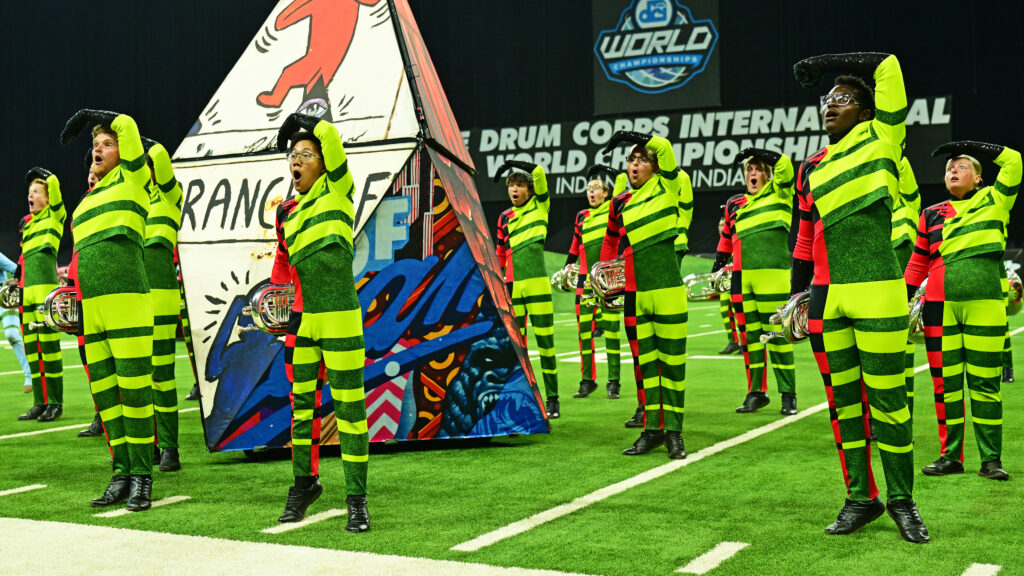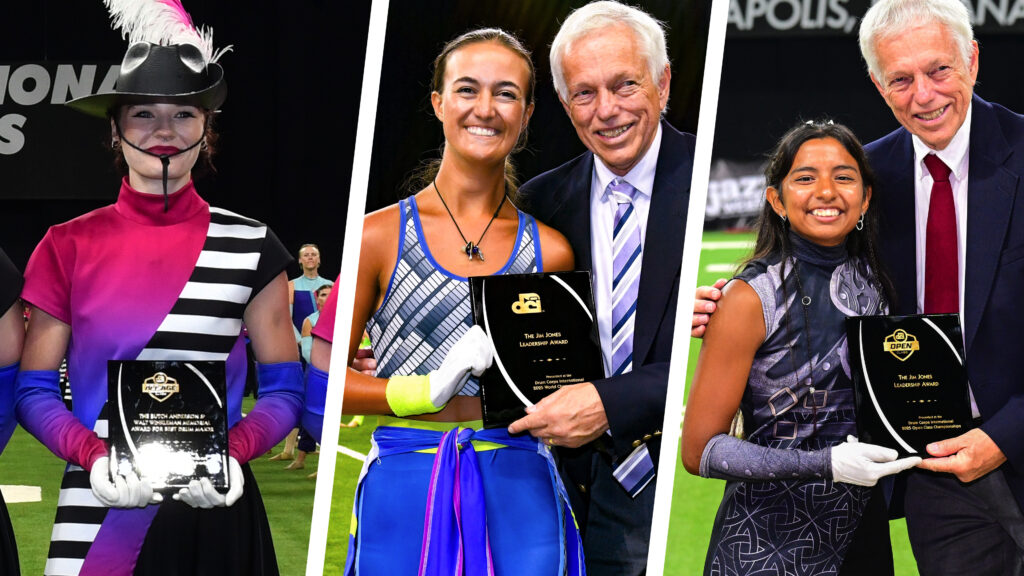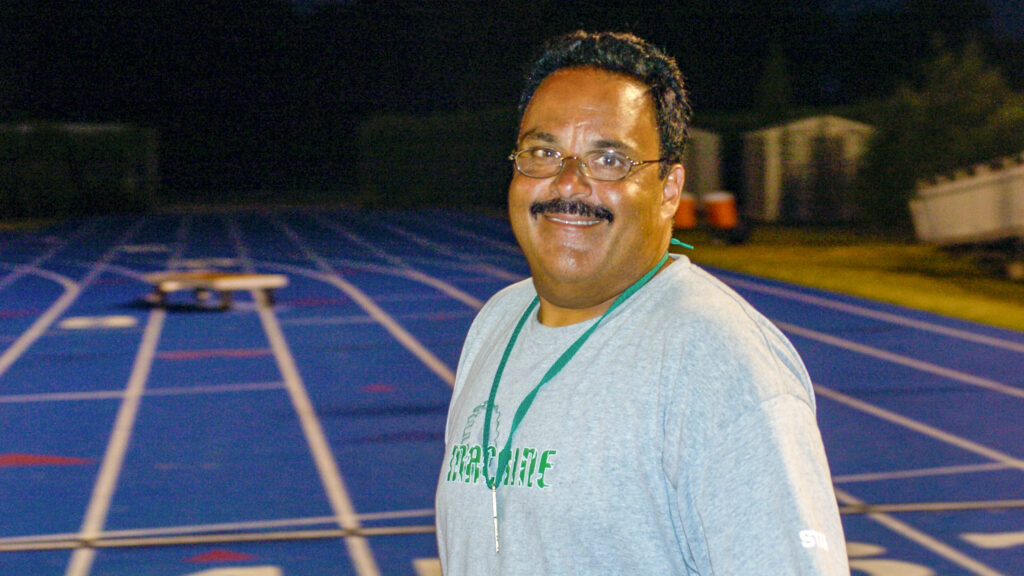The following are some memories from Rob Hansen, a drum corps percussionist who grew up in Kenosha, Wisconsin, a city on Lake Michigan just across the state line from Illinois.
During the 1960s, my hometown of Kenosha, Wis., was blessed with a superior music program. It was a great time to grow up: Wisconsin had the Green Bay Packers and Vince Lombardi, great role models for those who doubt the need for hard work, self discipline, sacrifice, the reality of competition, and the glory that comes with being a winner. You couldn’t ask for a better role model than Vince and the Packers, other than one’s parents, of course! Most kids started learning a musical instrument in 5th grade; however, I didn’t start until 6th grade. One of my friends took up drums in 5th grade, and I thought it would be a fun thing to try.
Throughout junior high and high school, it was considered very “cool” to play an instrument and be involved in the band and orchestra program. To many, this was much “cooler” than being a varsity athlete! The school district music director, Ralph Houghton, had a son my age named Steve, who became good friends with me in 7th grade, lived a few blocks away from me, and was also taking drum lessons from the same drum teacher as I. We ended up being close friends throughout our junior and high school years, though we ended up at different high schools. Steve was always very competitive, so I think we both looked at our respective high schools as rivals.
The drum teacher’s name was Manny Mitka, and he ran one of the music stores in town. Manny was a classic old-school percussionist, and a superb jazz drummer, did a stint in the Navy Band when he was young, and was a very strict teacher! One did NOT come to a lesson unprepared! I credit Manny for being a huge influence in my life; he emphasized discipline and practice/preparation, along with being one of the finest percussion teachers in the area. I remember how he emphasized the basics of drumming first; rudiments, reading music, and mastering the snare drum — traditional grip, of course.
After a couple years of just snare drumming and going through all the books like “Stick Control,” “Accents and Rebounds,” and others whose names are long forgotten, he got Steve and I to work on Jim Chapin’s “Advanced Techniques for the Modern Drummer,” which was written in 1948 and is still one of the best books for learning jazz drumming independence. I have been fortunate enough to hook up with Jim Chapin in the past several years for private lessons and he’s an amazing drummer in his own right, and an incredibly nice person as well.
In addition, Manny DEMANDED that we learn mallet percussion; xylophone/marimba, tympani, and all the other items in the percussion repertoire. Steve took it further than I, but I got up to being able to play Paul Creston’s “Concerto for Marimba and Orchestra,” “Fantasies on Japanese Woodprints,” Bach Inventions with other percussionists, and the like. Manny also encouraged us to listen to real drummers playing real music; jazz primarily, so we could listen to the likes of Max Roach, Elvin Jones, Buddy Rich, Mel Lewis, Tony Williams, and a young upstart on the scene by the name of Billy Cobham.
There were concerts galore in the area, many in Kenosha itself, sometimes in Milwaukee or other times in Chicago, each only an hour away, and we would see Buddy and his band, Stan Kenton, and Woody Herman up close and personal, which was an amazing experience for us young musicians! You can NEVER forget hearing “Channel One Suite” or “West Side Story Medley” live, right in your face! It would bring tears to the eyes, and the crowds cheered and gave standing ovations.
It’s funny how a young drummer can recall the names of the drummers with the other bands; John Von Ohlen and Peter Erskine with Kenton, Joe La Barbara with Woody, Butch Miles with Count Basie — it was very much like idolizing sports stars today. This was also the era when the Beatles and the rock music scene was kicking in to high gear, and though I liked their songs, I didn’t believe that playing that type of music was enough of a challenge.
Unfortunately, the big band era was going away and popular music ended up dominating the airwaves and concert halls. Steve Houghton would go on to a very successful career in the music business, was a drummer for Woody Herman’s big band back in the mid-1970s, and played with Paul Anka, the Toshiko Akiyoshi/Lew Tabackin Band, Freddie Hubbard, Joe Henderson, the LA studio scene and for television shows like “Dallas” and “Coach” and the Country Music Awards.
He’s cut a few CDs on his own with some name LA session musicians, has been with Maureen McGovern now for several years, and has recently been brought onto the music faculty at the University of Indiana. As for me, well, my life took a rather different route! Steve and I, along with most of the Kenosha drummers (there were many of them, and virtually ALL of them were students of Manny), also participated in the state solo and ensemble contests growing up, playing such classics as Mitch Markovich’s “Tornado,” “Stamina,” and “Badger Strut.” We both were selected for the all-state honors band program during our entire three high school years.
The Midwest was awash in parades and drum corps competitions at that time, so Steve and I would be involved in our respective high school marching bands and were in the same parades as some of the drum corps in the area. I’ll never forget one parade — the Racine Kilties drum line were wearing black T-shirts with their kilts, playing some incredibly cool rudimental drum solo — loud, precise — and I was amazed! Or maybe I was hooked! It was 1969.
Few of these drum corps guys were in a band, and most of them were from Racine, so I didn’t know any of them. They also looked tough — didn’t smile much, didn’t look too friendly! They didn’t look like the kind of guys one just walks up to and says “hi.” So the next spring (1970) I went to Racine to check out the Kilties, tried out for their snare line, and made it. I was 16 at the time and had about four years of lessons behind me by then. Though there were other corps in the area, there was something real special and magic about the Plaid versus all the others, and there were many others; the Kenosha Queensmen, the Shoreliners, the Kingsmen, the Racine Scouts, Madison Scouts, St. Paul Scouts, and down south less than an hour away were the Cavaliers, Des Plaines Vanguard, and the Royal Airs.
It was sheer drum corps heaven! These were all junior corps and many were all-male, and for the most part, drum corps back then consisted of members of the local community or nearby communities. Making the snare line was the easy part. The hard part came when I told my high school band director what I had done! I will say politely that he wasn’t happy! I don’t think he ever forgave me, either! At that time, for those more “schooled” in music, drum corps was considered not “real” music, and the participants weren’t considered “musicians.”
It was more of a “blue-collar” activity for kids who would otherwise have had little else to be involved with, or had gotten themselves into trouble. There was far less variety in the musical selections and the corps had far inferior equipment and no big name arrangers or instructors … those jobs were usually filled by former corps members who stuck around after they aged out. With two more years to go in high school, and with my sights set on attending the U.S. Naval Academy, it wasn’t a good idea to upset my band director, whom I would need to write a letter of recommendation for the Naval Academy.
So I was only able to spend a single season with the Kilties. It was a good year, but it wasn’t the great year that the Kilties had in 1969. We won Shriners International, took second at the U.S. Open and sixth at VFW Nationals that year, though the corps had won all of these contests the previous year. What were my recollections of that season? Some things probably never change: Hard work, practicing endlessly, long bus rides in yellow school buses, short tempers, periods of frustration, sleeping on gym floors, and giving up an entire summer. There were good times, there were bad times, and in the final analysis, I think it was the friends I made there that I will always cherish.
Drum corps itself was very different then. There was more involvement by veterans’ organizations, churches, the YMCA, and businessmen from the local community. There was more direct participation by the local community in support of “their” drum corps. The music was more mainstream with lots of show tunes from Broadway or music theme songs, and because of the requirement for a color presentation, a portion of a drum corps show had more of a patriotic theme.
The emphasis was on marching and maneuvering, straight lines, a constant tempo, company fronts, rudiments for the drum line, and a set structure to shows: Off-the-line, color presentation, concert standstill, drum solo or two, closers — all of which would need to be done in under 13 minutes. The “tic” system determined the final scores: .1 of a point for anything not done correctly, whether it was marching out of step, blowing a note wrong, dropping something on the field, or a snare line sounding dirty on one note. There were also inspections. Points would be taken off for a bad haircut, scuffed shoes (or spats), dirty instruments, frayed uniforms — that sort of thing. There also seemed to be a difference in the drum corps fan base then. Hearing the old recordings, one gets a sense of greater verbal enthusiasm for a particular corps — the crowds back then just seemed to be LOUDER than today.
It isn’t fair to compare today with the old days, pre-DCI, because it’s a different world now, drum corps is different, the marching is different, the music is different, the scoring system is different, the judging is different, the instructors and arrangers are much better educated, and the fans are different. Whether one is “better” than the other (old vs. new) I’ll leave up to the individual to decide. I’m sure that today’s members work just as har…
Michael Boo has been involved with drum and bugle corps since 1975, when he marched his first of three seasons with the Cavaliers.
He has a bachelor’s degree in music education and a master’s degree in music theory and composition.
He has written about the drum corps activity for over a quarter century for publications such as Drum Corps World, and presently is involved in a variety of projects for Drum Corps International, including souvenir program books, CD liner notes, DCI Update and Web articles, and other endeavors. Michael currently writes music for a variety of idioms, is a church handbell and vocal choir director, an assistant director of a community band, and a licensed Realtor in the state of Indiana. His other writing projects are for numerous publications, and he has published an honors-winning book on the history of figure skating. His hobbies include TaeKwonDo and hiking the Indiana Dunes. But more than anything, Michael is proud to love drum corps and to be a part of the activity in some small way, chronicling various facets of each season for the enjoyment of others.





